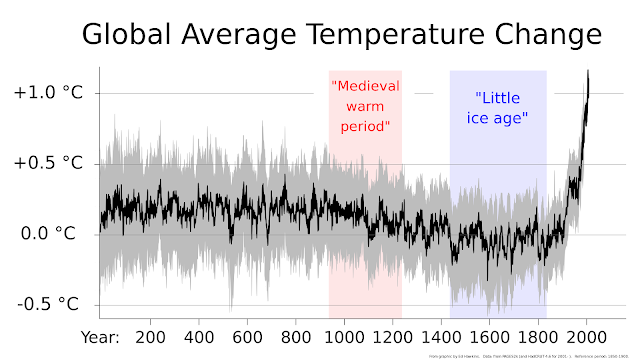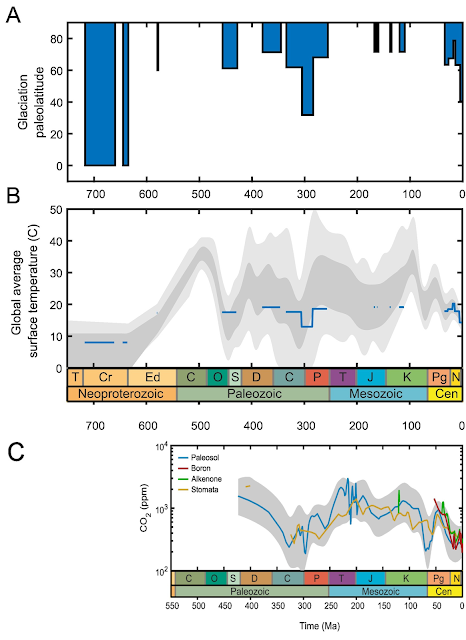Correlation Between CO2 and Temperature on Various Time Scales
.png)
Note: 1/15/2025. Graphs are updated to include 2024 when available. You sometimes hear that, at least on certain time scales, CO2 and global temperature (GMST) don't correlate very well or even that the two go in opposite directions. The implication drawn from this is that CO2 can't be the primary driver of climate changes. What I want to show here is that this claim is categorically false. On virtually all time scales in the Phanerozoic, CO2 and GMST correlate very well, especially when taking into consideration that GMST correlates with the log of CO2. The best way for me to demonstrate this point is to simply show the correlation. Where I can, I convert CO2 to forcings (using RF = 5.35*ln(CO2/280)) and and plot CO2 forcings on the x-axis and GMST on the y-axis. This gives us two advantages: first, it allows us to calculate the r^2 for that correlation, and second, the slope of the correlation gives us an indication of sensitivity - that is, the temperature response to chang...



